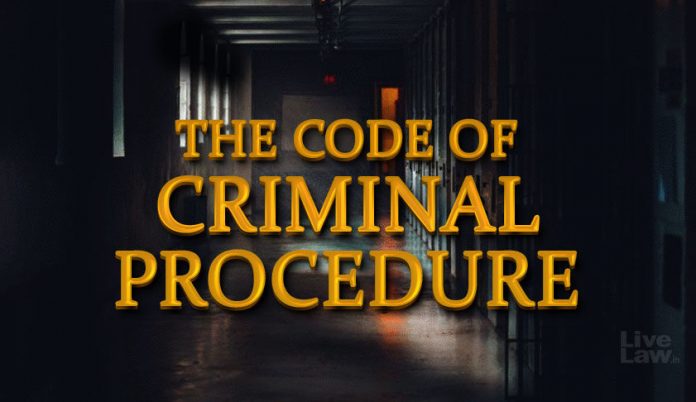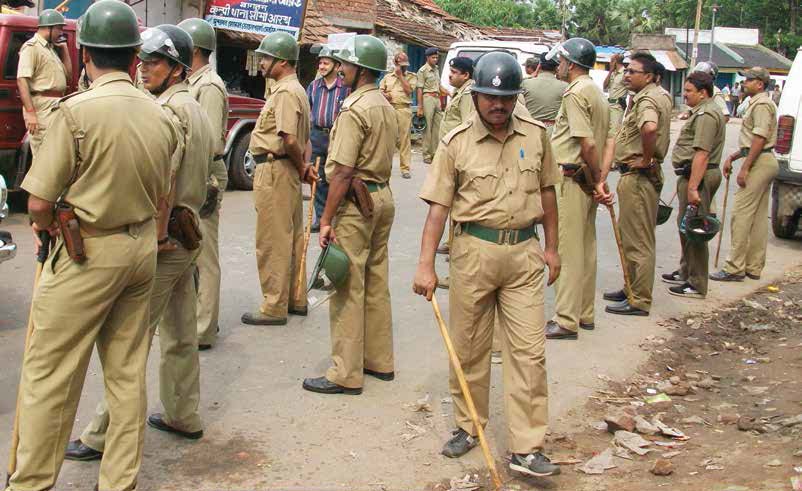This article is written by J. Jerusha Melanie and Kishita Gupta. In this article, the authors have explained the provisions of Sections 41 and 41A of the Code of Criminal Procedure, 1973, which deal with the arrests of people by the police without a warrant.
This article has been published by Sneha Mahawar.
Table of Contents
Introduction
It is no hidden fact that crimes are increasing every year. In the year 2020, India’s crime rate was 314.3%, which was an increase of 73.1% compared to the previous year. But there was a decline in the crime rate in 2021. Such a record-high incidence of crimes needs to be curbed, and such crimes must be properly investigated. For these reasons, the police need certain extraordinary powers to quickly arrest someone suspected of committing a crime without wasting precious moments while waiting for an arrest warrant. This is where Sections 41 and 41A of the Code of Criminal Procedure, 1973, come into play. These provisions bestow such powers on the police. Let’s dive into the article to know more about the two Sections and how they are relevant to the Indian criminal justice system.
Explaining Sections 41 and 41A CrPC
Section 41 CrPC
In accordance with Section 41, any police officer may arrest any of the following people without a warrant or a court order:
- Who commits a cognizable offence in the presence of a police officer.
- Who is the subject of a legitimate complaint, credible information, or a credible suspicion that he has committed an offence that is punished by imprisonment for a term that may be less than 7 years or that may extend to 7 years, with or without a fine.
The following requirements must be met
- Based on the complaint, information, or suspicion, the police officer has grounds to suspect that the subject has committed the specified offence.
- The police department is convinced that such an arrest is required for the following purposes:
- To stop the offender from committing other crimes; or
- For a thorough inquiry of the offence, or
- To stop the offender from destroying or otherwise tampering with the evidence of the crime; or
- To forbid such a person from offering any enticement, threat, or promise to anybody who is aware of the case’s facts in an effort to discourage him from telling the court or the police officer about those facts; or
- Because it is impossible to guarantee that such a person would appear in court as needed unless he is arrested;
While making the arrest, the police officer must write down his justification. But there is an exception that a police officer must always document the reasons in writing for not making an arrest, when doing so is not required under the terms of this subsection.
Section 41(2) of the Code of Criminal Procedure
Section 41(2) of the Code prohibits any police officer from making an arrest without an arrest warrant. It provides that, except under the provisions of Section 42 (arrest on refusal to give name and residence) of the Code, nobody suspected of committing a non-cognizable offence can be arrested without a warrant or a magistrate’s order.
Section 41A of CrPC
Section 41A of the CrPC talks about the notice of appearance before a police officer. It states the following:
- The police officer must issue a notice ordering anyone against whom a reasonable complaint has been made, credible information has been received, or a reasonable suspicion exists that they have committed a cognizable offence to appear before them or at such other location as may be specified in the notice, in all circumstances where the arrest of a person is not required under the terms of Section 41(1).
- It is the responsibility of the individual to whom such a notice is issued to abide by the notice’s provisions.
- If the individual receives the notice and complies with it, he will not be arrested for the offence mentioned in the notice unless the police officers believe that he should be detained for reasons that will be recorded.
- Subject to any orders that may have been issued in this regard by a competent Court, the police officer may, at any time, make an arrest for the offence specified in the notice if the person in question refuses to comply with the provisions of the notice or refuses to identify himself.
What is an arrest under CrPC
The word “arrest” is not defined either under the Code of Criminal Procedure, 1973 (hereinafter referred to as “the Code” or “CrPC”) or the Indian Penal Code, 1860 (IPC). However, going by the dictionary definition, an arrest refers to the taking or keeping of a person in custody by any legal authority, especially on a criminal charge. In other words, the legal deprivation of physical liberty by a legal authority is an arrest.
Further, many Indian courts have attempted to define the term “arrest,” such as in the case of R.R. Chari v. the State of Uttar Pradesh (1951), where the term “arrest” was held to be an act of being taken into custody to be officially accused of a crime. The Court also held that an arrest includes the seizure of an individual.
Whereas, in the case of State of Punjab v. Ajaib Singh (1995), the physical restraint used on an abducted person while they are being recovered, taken into custody, and delivered to the custody of the officer in charge of the closest camp without any allegations or accusations of any actual or suspected or apprehended commission by that person of any offence of a criminal or quasi-criminal nature or of any act detrimental to the State or the public interest, delivering such person into the custody of the officer in command of the closest camp in accordance with Section 4 of the Abducted Persons (Recovery and Restoration) Act, 1949, does not constitute an arrest or detention under Articles 22(1) and 22(2) of the Constitution.
Generally, the following are the main purposes for arresting someone:
- To explore the cause of any offence;
- To prosecute and investigate the accused;
- To prevent an accused from committing a crime;
- To ensure that the accused attends the trial at the right time;
- To prevent the accused from tampering with the evidence, etc.
Under the Code, Chapter V (Sections 41 to 60) deals with the concept and procedure of making an arrest.
Types of arrest
As afore-mentioned, Chapter V (Sections 41 to 60) of the Code deals with the concept and procedure of making an arrest. It specifies two kinds of arrest:
- Arrest made with a warrant issued by the appropriate magistrate;
- Arrest without a warrant.
An arrest with a warrant refers to an arrest made in pursuance of a warrant issued by an appropriate magistrate. Section 41(2) of the Code prohibits any police officer from making an arrest of a person suspected of committing a non-cognizable offence without an arrest warrant. It sets out the general rules regarding any arrest for non-cognizable offences; the general rule is that no one can be arrested for committing a non-cognizable offence without a warrant. Nevertheless, the exception of Section 41(2) is provided under Sections 41(1) and 42 of the Code. Section 42 states that, if any person who either commits or is accused of committing a non-cognizable offence refuses to furnish the required identification details like name and residential address, the police officer may arrest him even without a warrant.
On the other hand, Section 41(1) of the Code provides the circumstances when a police officer can arrest without a warrant from an appropriate magistrate. Section 41(1) is an exception to the general rule elucidated under Section 41(2).
Arrest under Section 41 CrPC
As aforementioned, Section 41 of the Code enumerates the scenarios when any police officer may make an arrest without a warrant. Though the said Section seems to vest great powers on the police officers, such powers are not unlimited or unrestricted. In the case of Ajit Singh v. Sham Lal and Others (1981), it was held that a person accused of possessing an illicit arm at one point in time can neither be called presently an accused nor a suspect thereof. So, defining the scope of Section 41(1) of the Code, the powers of the police to arrest a person without a warrant are only confined to persons who are accused or concerned with the offences or are suspects thereof.
When police may arrest without a warrant
As enumerated under Section 41 of the Code, the following are the circumstances when a police officer can arrest any person without getting an arrest warrant. In other words, the following are the people who may be arrested without a warrant of arrest from the appropriate magistrate.
Person committing a cognizable offence in a police officer’s presence
Firstly, under Section 41(1)(a) of the Code, any police officer may arrest anyone who commits a cognizable offence in his presence. In the said provision, the term “may” denotes the discretionary power of the police officer. Any police officer who personally witnesses someone committing a cognizable offence has the power to either arrest him then and there without waiting for a magistrate to issue a warrant to arrest him or wait for the issuance of an arrest warrant. As the Court held in the case of Amarawati v. State of Uttar Pradesh (2005), no police officer is strictly bound to arrest someone under Section 41 (1) of the Code. Further, the word “may” in Section 41 of the Code of Criminal Procedure cannot be read as “must” or “shall.”
Further, in the case of M.C. Abraham and Another. v. State of Maharashtra and Others (2002), the Supreme Court observed that a police officer may make an arrest without a warrant or a magistrate’s order under Section 41 of the Criminal Procedure Code. The police officer has discretion in the decision to make an arrest under Section 41 of the Criminal Procedure Code. The Supreme Court has noted that a police officer is not obligated to act spontaneously and to always make an arrest as soon as a report is filed. Further observation shows that the investigating officer may decide whether or not the accused individual has to be arrested in appropriate circumstances after conducting some investigation. A police officer is not always required to arrest an accused even if it is claimed that he has committed a cognizable offence because the ability to make an arrest is discretionary. The Supreme Court continued by noting that the power must be used with caution because an arrest is inherently an infringement on the subject’s right to privacy and does have an impact on the citizen’s standing and reputation. It depends on the type of people who are accused of committing the cognizable offence and the alleged nature of the claimed offence. Therefore, power must be used with prudence and restraint.
Person suspected of committing a cognizable offence punishable with imprisonment for seven years or less
Section 41(1)(b) of the Code provides that any police officer may arrest anyone-
- Who is suspected of committing a cognizable offence punishable with imprisonment of seven-year or less, with or without a fine, on the basis of a reasonable complaint, any credible information received, or the existence of reasonable suspicion.
The said Section also provides certain necessary conditions to be satisfied before arresting the suspected person. The conditions are:
- The police officer has reason to believe that on the basis of the suspicion, complaint, or information, the suspect has probably committed the offence, and
- The police officer considers the arrest absolutely imperative-
- To prevent the suspect from committing any other offence;
- To properly investigate the offence;
- To prevent him from either tampering or disappearing with the evidence relating to the offence;
- To prevent him from inducing, threatening, or promising anyone having acquaintance with the case to not disclose the facts to neither the court nor the police officer;
- To ensure the accused’s presence in court when required.
However, the police officer arresting a suspect under the said Section should record in writing his reasons for making such an arrest.
In a recent judgement by the Delhi High Court in Pradeep Kumar Tiwari v. State of NCT of Delhi (2022), it was observed that, when a reasonable complaint has been made, credible information has been obtained, or a reasonable suspicion exists that a person has committed a cognizable offence punishable with imprisonment for less than seven years or which may extend to seven years with or without a fine, the police may act against that person and effect his arrest, according to Section 41(1)(b) CrPC. However, the police officer must also be ‘satisfied’ with the ‘presence’ of other requirements, namely, that he has cause to suspect that the individual has committed the specified offence based on the complaint, information, or suspicion. Second, he must be ‘confident’ that the arrest was ‘necessary’ to stop the person from committing any other crimes, to allow for a thorough investigation of the crime, or to stop them from erasing or otherwise tampering with the evidence of the crime. Additional justifications for an arrest include preventing the suspect from coercing or threatening anyone who knows the truth or that it is impossible to guarantee the suspect’s attendance in court when it is necessary. Most importantly, the police officer must put his justifications in writing while making the arrest.
Person suspected of committing a cognizable offence punishable with imprisonment for more than seven years, or death
Section 41(1)(ba) of the Code extends the power of a police officer provided under Section 41(1)(b) of the Code. It provides that any police officer can arrest any person who is suspected of committing any cognizable offence punishable with imprisonment of seven years or more, with or without a fine or death. The conditions for such an arrest are almost the same as those mentioned under Section 41(1)(b) of the Code, that is:
- Credible information was received by the police officer.
- The police officer must have reason to believe the suspicion based on the information received.
It was observed in Cbi v. Surender Kappor Etc (2016) that, according to Section 467 of the Indian Penal Code, forging a valuable document carries a life sentence or a maximum penalty of ten years in jail. Therefore, in contrast to Section 41(1)(b) of the Cr.P.C., the discretion to “not to arrest” is constrained under Section 41(1)(ba).
Proclaimed offender
Section 41(1)(c) of the Code provides that any police officer may arrest any proclaimed offender. The offender may be proclaimed either by the Code or by any order of the state government.
The term ‘proclaimed offender’ is elucidated under Section 82 of the Code as any person absconding or concealing himself so that an arrest warrant issued against him cannot be executed. So, if any police officer discovers such a proclaimed offender, he may arrest him without requiring a separate arrest warrant.
Person suspected to be possessing any stolen property
Section 41(1)(d) of the Code gives any police officer the power to arrest without a warrant anyone who possesses anything which is reasonably suspected to constitute stolen property. Further, reasonable suspicion must exist of the suspect that he has committed any offence with regard to the stolen property.
It was observed in the case of Avinash Madhukar Mukhedkar v. the State of Maharashtra (1983), it is true that Schedule I of the Criminal Procedure Code describes the type of offence, whether it is cognizable or not. However, where the offence is committed in violation of any other legislation, Section 41(1)(d) must be regarded as an exemption to Schedule I of the Criminal Procedure Code.
Person obstructing the execution of a police officer’s duty
The power of a police officer to arrest any person who is obstructing the execution of his official duty without a warrant.
Person who escapes or attempts to escape from lawful custody
Section 41(1)(e) of the Code provides a much-needed power to any police officer, that is, to arrest without warrant any person who has either escaped or attempts to escape from lawful custody. Though the term “custody” is not explicitly defined under the Code, Section 167 of the Code elucidates the concept of custody. In general parlance, it refers to the detention of an accused in pursuance of an investigation. Custody may be either judicial or police custody.
Suspected deserter from any armed forces of the Union
Under Section 41(1)(f) of the Code, any police officer may arrest, without a warrant, any person who is reasonably suspected to be a deserter from the Armed Forces of the Union. The Armed Forces of the Union refers to the three military forces in India, which are the Indian Army, Indian Navy, and Indian Air Force. A deserter is a person who abandons his service or duty without availing of leave.
A person suspected to have committed an offence outside India
Section 41(1)(g) of the Code provides that any police officer may arrest without a warrant any person who is suspected of doing an act outside India which constitutes an offence when done in India. The suspicion may be based on:
- A reasonable complaint.
- Credible information.
- A reasonable suspicion.
Recently, in a case that involved extradition, Section 41(1)(g) came into play. It was observed by the Madras High Court in Mr. Mohan Karnaker Chandra v. the Inspector of Police (2008) that it is very evident that extradition proceedings can only be started against someone who is accused of committing an offence outside of India because an offence that is committed in India is also punished there. Therefore, in light of Section 41(1)(g) of the Criminal Procedure Code, it is the responsibility of the prosecution to prove to the court at the time of arrest and production that the person has committed any crime outside of India that would be punishable as a crime if committed in India.
A released convict breaching any rule made under Section 356(5) of CrPC
Section 356(5) of the Code deals with the provisions related to notifying the change in the address of any person convicted more than once of certain offences. It states that when a person is punished with imprisonment of at least 3 years for certain offences, a Magistrate of Second Class can order him to notify his change of residential address for a period of up to five years after the term of imprisonment ends.
Person requested by another police officer to be arrested
When any police officer requests another police officer to arrest a specific person for a particular cause, the officer to whom the requisition is made can arrest the specified person without a warrant. Section 41(1)(i) of the Code does not provide any conditions for accepting such a request. However, it states that the police officer to whom the request is made may give consent to such an arrest if it appears to him that the arrest can be lawfully made without a warrant.
Notice of appearance under Section 41A CrPC
Section 41A of the Code was added to the Code by the Code of Criminal Procedure (Amendment) Act, 2008. It provides that when a police officer cannot make an arrest under Section 41(1) of the Code of the person suspected of committing a cognizable offence, he may issue a notice of appearance to the suspect to make him appear before him at any specific place and time.
The conditions for issuing such a warrant are:
- Reasonable suspicion;
- Credible information, or
- Reasonable complaint.
The said Section reads, “when such a notice is issued to any person, it shall be the duty of the person to comply with the terms.” So, a notice of appearance legally binds the suspect to comply with the conditions of the notice. Further, as long as the suspect continues to comply with the terms of the notice, the police officer can not arrest him, provided he considers it necessary. Nevertheless, he should record his reasons for making such an arrest despite the terms of the notice being fulfilled.
In the case of Dr. Rini Johar and Another v. the State Of M.P. (2016) the Supreme Court observed that according to Section 41A CrPC, the police officer must issue a notice directing the accused to appear before him at a specific location and time where the arrest of the individual is not necessary by Section 41(1) CrPC. The law requires such an accused to come before the police officer, and it further stipulates that if the accused complies with the requirements of the notice, he must not be detained unless the police officer determines that the arrest is required for reasons that must be documented. The condition precedent for arrest outlined in Section 41 of the Criminal Procedure Code must also be met at this point, and the Magistrate will conduct the same level of examination.
The Supreme Court judgement in Arnesh Kumar v. the State of Bihar (2014) made a significant observation on the arrest by the police officers as per CrPC. The Court observed that a person accused of an offence punishable by imprisonment for a term that may be less than seven years or that may extend to seven years with or without a fine cannot be arrested by a police officer unless the officer is satisfied that the person has committed the offence, according to Section 41 of the Criminal Procedure Code (CrPC), which was cited by the court in its analysis of the provision. In addition, it has been ruled that a police officer must be convinced before making an arrest in these situations that the arrest is necessary to stop the offender from committing any additional crimes, to allow for a thorough investigation of the case, to stop the accused from destroying or otherwise tampering with the evidence, or to stop the offender from offering a witness anything in exchange for his or her testimony. Additionally, the police officer must be convinced that the arrest is required for one or more of the objectives defined in subclauses (a) through (e) of clause (1) of Section 41 CrPC.
Recently, in the judgement of Mukesh Khurana v. State of NCT Delhi (2022), the Delhi High Court held that the Supreme Court’s positions have been included in the revised Criminal Procedure Code, particularly with the addition of Section 41A CrPC and changes to Section 41A CrPC. Therefore, even when detaining someone for a crime carrying a maximum sentence of seven years in prison, the police must first issue a notice and only make the arrest if the noticee or suspect refuses to cooperate. Of course, there are other circumstances under which a police officer may make an arrest, as specified in Section 41(1)(a) and (b) of the Criminal Procedure Code.
The power to release someone on anticipatory bail is extraordinary in nature, and while this was previously stated in Shri Gurbaksh Singh Sibbia v. the State of Punjab (1980) and reiterated in Siddharam Satlingappa Mhetre v. the State of Maharashtra (2011), it would not justify the conclusion that the power must be exercised in exceptional cases only.
Guidelines on issuing a notice of appearance
In the case of Arnesh Kumar v. State of Bihar and Another (2014), the Apex Court gave the following directions as to the issuance of a notice of appearance by a police officer to any accused:
- The state governments must give directions to the police officer to abide by the requisites mentioned under Section 41 of the Code;
- The police officers must be provided with a checklist of the sub-clauses of Section 41 of the Code, which should be duly filled in and forwarded to the Magistrate to prove why the arrest without a warrant was necessary;
- The notice of appearance should be served on the suspect within two weeks from the date of the institution of the case.
Conclusion
Section 41 of the Code is both a boon and a bane. It is a boon because using the same, the police officer will be able to arrest the suspect without wasting time waiting for the warrant. In the absence of Section 41 of the Code, a police officer who witnesses with his own eyes someone committing a cognizable offence will have to let go of the accused even though he knows that he is the culprit. The time wasted in procuring the warrant will probably result in the suspect escaping from the place of action. So, Section 41 provides ample discretionary powers to arrest any person without a warrant if he considers the arrest quite pertinent and urgent. However, when not utilised judicially, the exercise of the powers of a police officer vested under Section 41 may become chaotic. Such powers are practically unlimited.
Further, Section 41A of the Code, which gives a police officer the power to serve a notice of appearance on any suspect, may be severely misused. This is because it provides that the notice can mandate the suspect to appear before the police officer at any ‘such other place’. Using the term, the police officer may require the suspect to appear literally anywhere, not just at the police station or headquarters. So, though Sections 41 and 41A of the Code are advantageous to criminal procedures, there are certain loopholes in them that may be misused by police officers. Hence, there is an urgent need to bring about stringent rules as to the extent of application of the said sections.
Frequently Asked Questions (FAQs)
Can a police officer arrest me without an arrest warrant?
Yes, any police officer can arrest you without an arrest warrant if the provisions of Section 41(1) of the Code of Criminal Procedure, 1973 are fulfilled.
What does ‘credible information’ mean under Section 41 of the Code of Criminal Procedure?
The term “credible information” is not defined under the Code of Criminal Procedure, 1973. However, it implies that the police officer making the arrest must look at the definite facts and materials placed before him.
Can a police officer arrest a suspect on behalf of another police officer?
Yes, under Section 41(1)(i) of the Code of Criminal Procedure, 1973, any police officer can arrest a suspect on behalf of another police officer.
References
- Pre-Arrest Notice: Section 41A of the Criminal Procedure Code (lawyersclubindia.com)
- Arrest by Police Without Warrant: Section 41 of CrPC (thefactfactor.com)
- A Review Of Section 41A Of The Code Of Criminal Procedure, 1973 – The Law Brigade Publishers (India)
- CII 2020 Volume 1.pdf (ncrb.gov.in)
- Provisions pertaining to the Arrest of a Person under the Indian Penal Code, 1860 (ipleaders.in)
Students of Lawsikho courses regularly produce writing assignments and work on practical exercises as a part of their coursework and develop themselves in real-life practical skills.
LawSikho has created a telegram group for exchanging legal knowledge, referrals, and various opportunities. You can click on this link and join:
Follow us on Instagram and subscribe to our YouTube channel for more amazing legal content.
 Serato DJ Crack 2025Serato DJ PRO Crack
Serato DJ Crack 2025Serato DJ PRO Crack













 Allow notifications
Allow notifications


